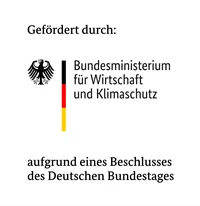Active Rotor Controlled via Periodic Scheme

The design of helicopter rotor blades requires significant compromise due to the varying operating conditions encountered in hover and forward flight. In the European Horizon 2020 SABRE project, it was shown that power savings can be achieved by incorporating a shape-adaptive camber mechanism on rotor blades and actuating it at higher harmonic frequencies. As a follow-up project, similar innovative shape-adaptive rotor blades are being researched in ARCTIS. This project is funded by the Luftfahrt Forschungs Program LuFo VI-II of the Federal Ministry for Economic Affairs and Climate Action of Germany. The focus of research in this project is to reduce rotor noise, required power and fuel consumption over the entire helicopter envelope, and ultimately to achieve lower emissions and environmental impact of operation. The novelty of the approach is that the active camber mechanism is envisaged to be controlled using periodic control approaches in order to achieve the objectives of power and noise reduction. Additionally, an optimisation of the rotor blade planform would be carried out in order to achieve the optimal interaction between the blade elastic response and the dynamic variation of the blade section camber.
ARCTIS is a multi-university project where TUM partners with Hochschule Muenchen and TU Dresden. TUM is responsible for the following main tasks within the project:
- Comprehensive aeromechanical analyses of the baseline rotor and the active rotor.
- Comprehensive aeroacoustic analyses for rotor
- Optimisation of the rotor blade planform
Kontakt
Amine Abdelmoula, M.Sc.
Sumeet Kumar, M.Tech.